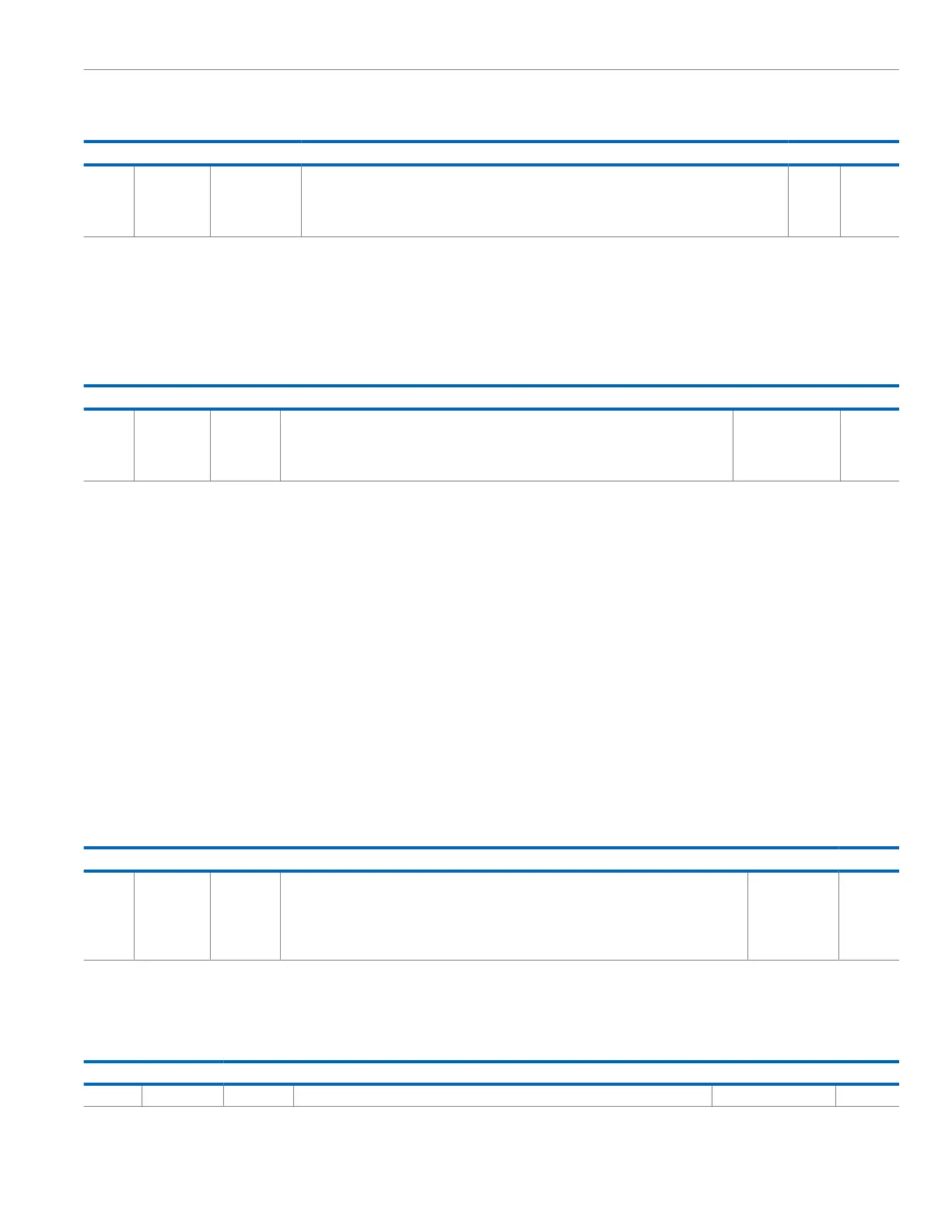Reference Manual ADuCM356
REGISTER DETAILS: FLASH CACHE CONTROLLER (FLCC)
analog.com Rev. A | 196 of 312
Table 232. Bit descriptions for KEY (Continued)
Bits Bit Name Settings Description Reset Access
0x676C7565 User key. Write this field with hexadecimal value of 0x676C7565 to enable certain registers to be
modified or to allow certain commands to be executed. This key is used as a check to prevent
accidental modification of settings or flash content. It is not a security component and is not intended
to be confidential information.
WRITE ABORT ADDRESS REGISTER
Address: 0x40018024, Reset: 0xXXXXXXXX, Name: WR_ABORT_ADDR
This register contains the address of a recently aborted write command. This address is only populated if the aborted write command was
started. If the command is aborted early enough to have no effect on the flash IP, this address is not updated.
Table 233. Bit Descriptions for WR_ABORT_ADDR
Bits Bit Name Settings Description Reset Access
[31:0] VALUE Hold Target Address. Holds the address targeted by an ongoing write command and retains
its value after an abort event. User code can read this register to determine the flash locations
affected by a write abort. The register value is not guaranteed to persist after a new flash
command is requested. Therefore, read this value immediately following an aborted write.
0xXXXXXXXX R
WRITE PROTECTION REGISTER
Address: 0x40018028, Reset: 0xFFFFFFFF, Name: WRPROT
A user key is required to modify this register. This register can be automatically configured during device startup, in which case the bootloader
reads data from user space and loads that data into this register.
User code can affect nonvolatile write protection by writing to the appropriate location in the flash memory (see the Protection and Integrity
section). By default, the relevant location in flash is 0x0019C but can be relocated by the Analog Devices bootloader.
Alternatively, user code can assert protection at run time for any unprotected blocks by directly writing this register. Blocks can have
protection added but cannot have protection removed, and changes are lost on reset. This approach is suggested especially during user code
development.
All write protection is cleared on a POR, but the Analog Devices bootloader reasserts write protection (as defined by the WRPROT word) in
user space before enabling user access to the flash array. Removing write protection can only be performed by an erase page command of the
most significant page in user space (provided that page is not currently protected) or by a mass erase command. Following a completed mass
erase command, all protection of pages in user space is immediately cleared. The user can write to user space immediately following such an
erase without a device reset required.
Table 234. Bit Descriptions for WRPROT
Bits Bit Name Settings Description Reset Access
[31:0] WORD Clear Bits to Write Protect Related Groups of User Space Pages. After cleared, these bits can
only be set again by resetting the device. Each bit of this 32-bit word represents a 32nd of the
total available user space. For 256 kB parts consisting of 2 kB pages (128 pages), each bit
represents the write protection state of a group of four pages. The most significant bit of this
register corresponds to the most significant group of pages in user space.
0xFFFFFFFF R/W0C
SIGNATURE REGISTER
Address: 0x4001802C, Reset: 0xXXXXXXXX, Name: SIGNATURE
Table 235. Bit Descriptions for SIGNATURE
Bits Bit Name Settings Description Reset Access
[31:0] VALUE Provides Read Access to the Most Recently Generated Signature. 0xXXXXXXXX R

